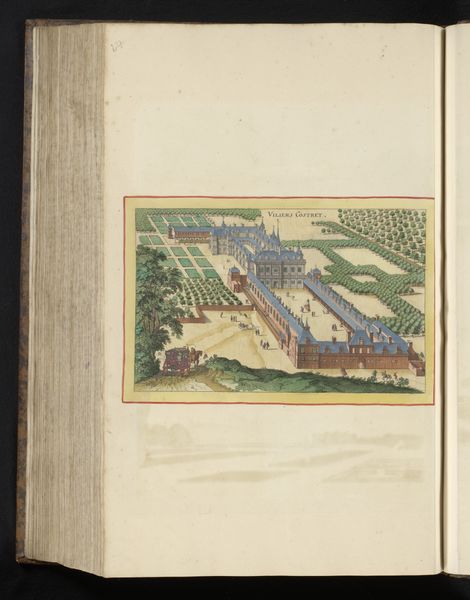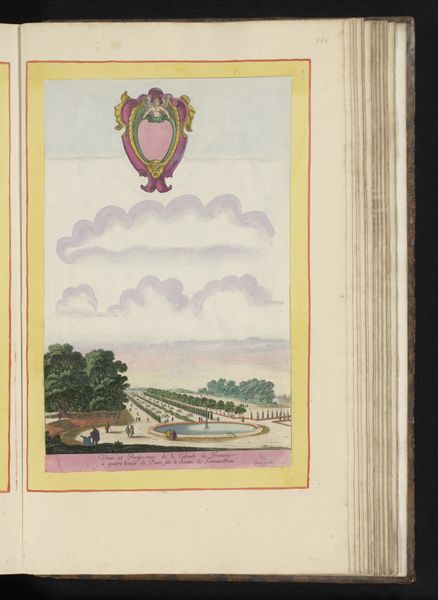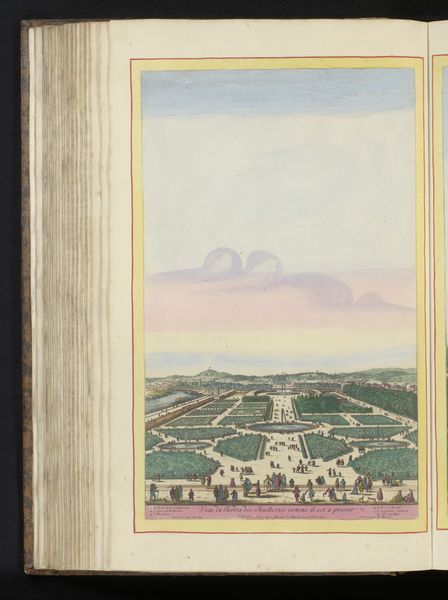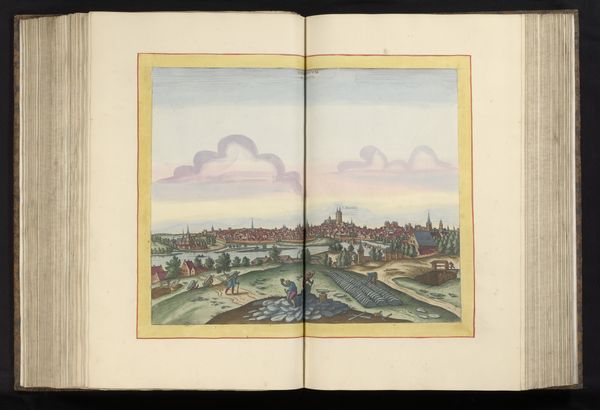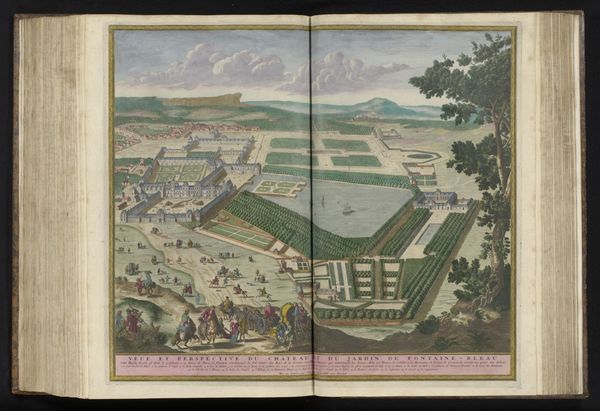
#
aged paper
#
book binding
#
paper non-digital material
#
sketch book
#
personal sketchbook
#
sketchbook drawing
#
watercolour illustration
#
storyboard and sketchbook work
#
sketchbook art
#
watercolor
Dimensions: height 354 mm, width 280 mm, height 536 mm, width 330 mm
Copyright: Rijks Museum: Open Domain
This bird’s-eye view of the Château d’Anet, rendered by Matthäus Merian the Younger, presents a meticulously ordered world. The layout itself, with its symmetrical gardens and grand avenues, speaks of control, reflecting a desire to impose order upon nature and, perhaps, upon the self. Consider the motif of the garden. Since ancient times, enclosed gardens have symbolized paradise, a refuge from the wild. Yet, here, the garden is not a wild Eden but a structured space. This resonates with the Renaissance idea of the "locus amoenus," an ideal, cultivated landscape representing harmony and balance. We see echoes of this in the geometric precision of Roman mosaics and the later, more elaborate parterres of Versailles. The emotional pull here lies in the tension between freedom and constraint, a dialectic that has played out across history, from the walled cities of the medieval era to the gated communities of today. This desire for controlled space, safety and order speaks to the subconscious longing for an ideal world, even as it remains ever out of reach. It's a recurring human dream, reshaped and reimagined, yet always present in the collective memory.
Comments
No comments
Be the first to comment and join the conversation on the ultimate creative platform.


